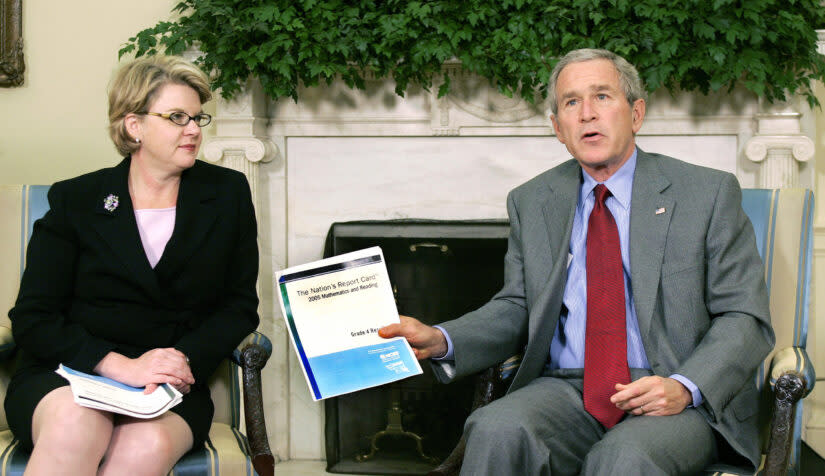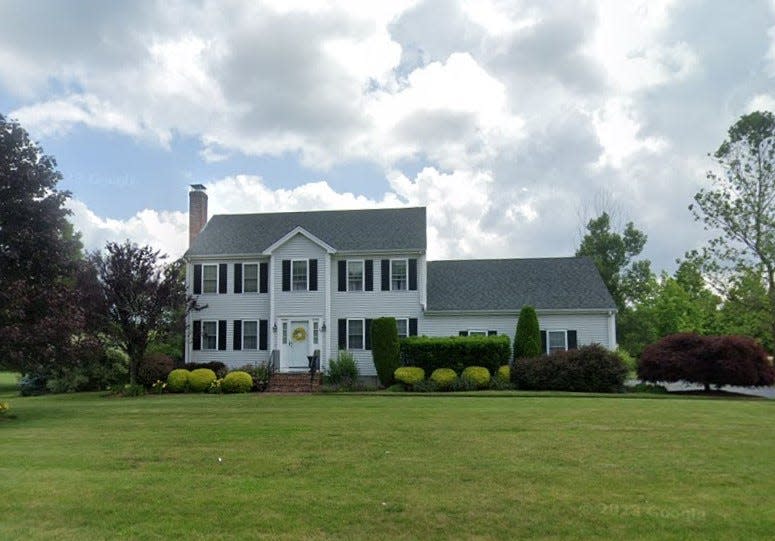With the presidential election less than six months away, Joe Biden and Donald Trump will soon unveil their platforms and begin rallying voters around their agendas for 2025 and beyond. And while K–12 education typically spends little time in the national spotlight, the campaign will bring far greater clarity to the candidates’ positions on contentious issues like school choice, standardized testing and civil rights protections for students.
But research suggests that both men might be wise to play their cards close to the vest. According to a paper released this spring, presidents who weighed in on education policy debates between 2009 and 2021 — such as COVID-era school closures or the adoption of Common Core — tended to polarize the public much more than galvanize them. Only when endorsing proposals that cut directly against the traditional position of their parties do they succeed in generating overall public support, the authors write.
The findings seem to counsel caution in an election year, particularly with attitudes on national politics diverging as widely and consistently as they have in the history of polling. They also raise challenging questions about whether federal leadership on K–12 schools can be viable in the absence of the bipartisan consensus that largely favored school reform in the 1990s and 2000s. If not, state-level actors like governors and legislators may be left in the driver’s seat for the foreseeable future.
Get stories like these delivered straight to your inbox. Sign up for The 74 Newsletter
The difference in positive evaluations of teachers’ unions is of approximately the same magnitude as the partisan gap on legal abortion under any circumstances.
David Houston, George Mason University
David Houston, a political scientist at George Mason University and the paper’s lead author, said the gulf separating Democrats and Republicans on education questions resembles some of the biggest divides in the American cultural landscape.
“We really disagree on a lot of education issues, and that trend has accelerated over the last decade,” he said. “The difference in positive evaluations of teachers’ unions is of approximately the same magnitude as the partisan gap on legal abortion under any circumstances.”
9/11’s Permanent Mark on NCLB: Tragedy, Triumph & Failure
If the politics of education has taken on some of the acrimony surrounding other issues, it represents a break with historical patterns. Schools have traditionally been insulated from national trends by their unique governance structure, with elected boards attracting little public attention as they decide questions of funding and curriculum. When presidents have entered the fray — as in the case of school desegregation in the 1950s, or the push to pass the No Child Left Behind law in the early 2000s — they have encountered resistance, but seldom failed entirely.
Morgan Polikoff, a professor of education at the University of Southern California, agreed that the past decade has brought heightened partisanship. Yet he also voiced hope that future presidents, perhaps including some now occupying state-level office, could notch greater education policy successes than Washington has seen recently.
I could imagine having national leaders who were charismatic and had powerful views about the role of federal education policy again. We just don’t have them currently, and we didn’t have them in the previous administration.
Morgan Polikoff, University of Southern California
“I could imagine having national leaders who were charismatic and had powerful views about the role of federal education policy again,” said Polikoff. “We just don’t have them currently, and we didn’t have them in the previous administration.”
The Obama exception
To estimate the influence of high-profile politicians like the current and former presidents, Houston built his study on public opinion research dating back to 2007.
The annual Education Next poll, developed and administered by researchers at Harvard, is one of the only measures that regularly surveys the public on their attitudes toward education topics. The paper relies on responses drawn from five separate editions of the poll, which included questions on topics like school choice, merit pay for teachers, and allowing illegal immigrants to receive in-state tuition to attend public universities. (Houston, who formerly served as Education Next’s survey director, has previously used similar data to show that general opinions on schools are becoming more partisan with time.)
What Do Americans Think of School Choice? Depends on How You Ask the Question
“I look at questions that have been asked in the exact same way, or nearly the exact same way, over the course of at least 10 years,” he said. “Regardless of the imperfections of the survey questions — and every survey question has imperfections — those are true over time, so we can capture trends.”
Before giving their own views of 18 policy proposals, a random assortment of participants were first primed by hearing the incumbent president’s opinions on them. Because respondents included Democrats, Republicans, and independents, Houston was able to measure their reaction to hearing that a highly visible figure of either the same or opposing party had opined on a particular policy.

The overall result of receiving a partisan cue — effectively becoming aware of the president’s endorsement, regardless of one’s own political preferences — was statistically insignificant, moving respondents’ attitudes by just .02 points on a five-point scale. But that average accounts for larger effects that moved Democrats and Republicans in opposite directions: If someone learned that a president of his own party favored a specific education policy, they warmed to it by an average of .37 points. If a president of the opposite party was revealed to favor a policy, whether school vouchers or universal pre-K, the respondent moved away from that proposal by .32 points.
In other words, voters carefully weigh what high-profile figures like U.S. presidents say about schools. But their pronouncements tend to be counterproductive, splitting the public along partisan lines.
Recent history offers some support for the paper’s hypothesis. For example, multiple studies of school districts’ behavior during the pandemic found that their local partisanship, much more so than the prevalence of COVID in the surrounding area, was highly associated with whether they heeded President Trump’s 2020 exhortation to open schools for in-person learning.
Politics, Not Science, is Driving School Reopening Decisions to a ‘Really Dangerous’ Degree, Research Suggests
Notably, one subset of results actually showed the opposite effect, bringing both sides somewhat closer to one another. When a president backs policies that are not traditionally associated with their party and its backers — the key example being Barack Obama, whose endorsement of charter schools, merit pay and higher academic standards were revealed to partisans in three separate polls — it actually depolarizes responses: Democrats moved .28 points toward the previously unfavored proposals, while Republicans moved in the opposite direction by .14 points.
Charles Barone, the vice president of K–12 policy for the pressure group Democrats for Education Reform, said his own observations of voters during the Obama era largely dovetailed with the study’s conclusions.
“Obama’s support for education reform, and particularly charter schools, did help with Democrats,” Barone said. “We saw higher poll numbers among Democrats on issues like charters after Obama came out in favor of them.”
Elusive common ground
Education observers generally agreed that polarization around schools has clearly escalated since the Obama administration, and that many everyday voters rely heavily on their party leaders to form judgments on policy initiatives they’re unfamiliar with.
But while Polikoff agreed that the receding center ground represented a “huge problem” for those attempting to improve the way schools deliver education, he added that President Biden’s most recent predecessors might have been particularly good at exercising partisan energies.

“You wouldn’t necessarily want to extrapolate from these two presidents to all of them,” he said. “Obama and Trump, if nothing else, were very visible and almost ubiquitous in ways that other presidents might not be — and that state and local leaders, who are actually influencing these policies — are not.”
State leadership may provide some cause for optimism as well. While rancorous fights over school closures and contentious classroom material have won headlines in recent years, long-awaited support from both parties has also led to efforts to incorporate the science of reading in early literacy instruction. And in further illustration of Houston’s findings, a slew of Republican governors have taken the opportunity to lift teacher salaries, winning popular approval in part by embracing a stance that is most often associated with Democrats.
Why Are So Many Republicans Raising Teacher Salaries?
Margaret Spellings, formerly the U.S. Secretary of Education under President George W. Bush, now serves as the CEO of the Washington-based Bipartisan Policy Center. An enthusiastic proponent of No Child Left Behind-style education reform, she said she was struck by the “vacuum of federal leadership and cohesion” that now prevails in Washington.
“I wish someone would tell me what the Biden K–12 policy is. There is none. And the Trump administration was just about vouchers.”
– Margaret Spellings, Bipartisan Policy Center
In her office, she said, she still keeps mementos of the law’s passage, which was supported by mammoth margins in both the U.S. House and Senate. That occurred during the administration of a much more unifying president — Bush was riding sky-high approval ratings in the wake of the 9/11 attacks, and NCLB was seen as a major bipartisan compromise — but the victory reflected what political will and energy could accomplish, she added
“I wish someone would tell me what the Biden K–12 policy is,” Spellings said. “There is none. And the Trump administration was just about vouchers. But I haven’t given up on bipartisanship, period, or I wouldn’t be doing the job I’m doing.”
Signup bonus from






